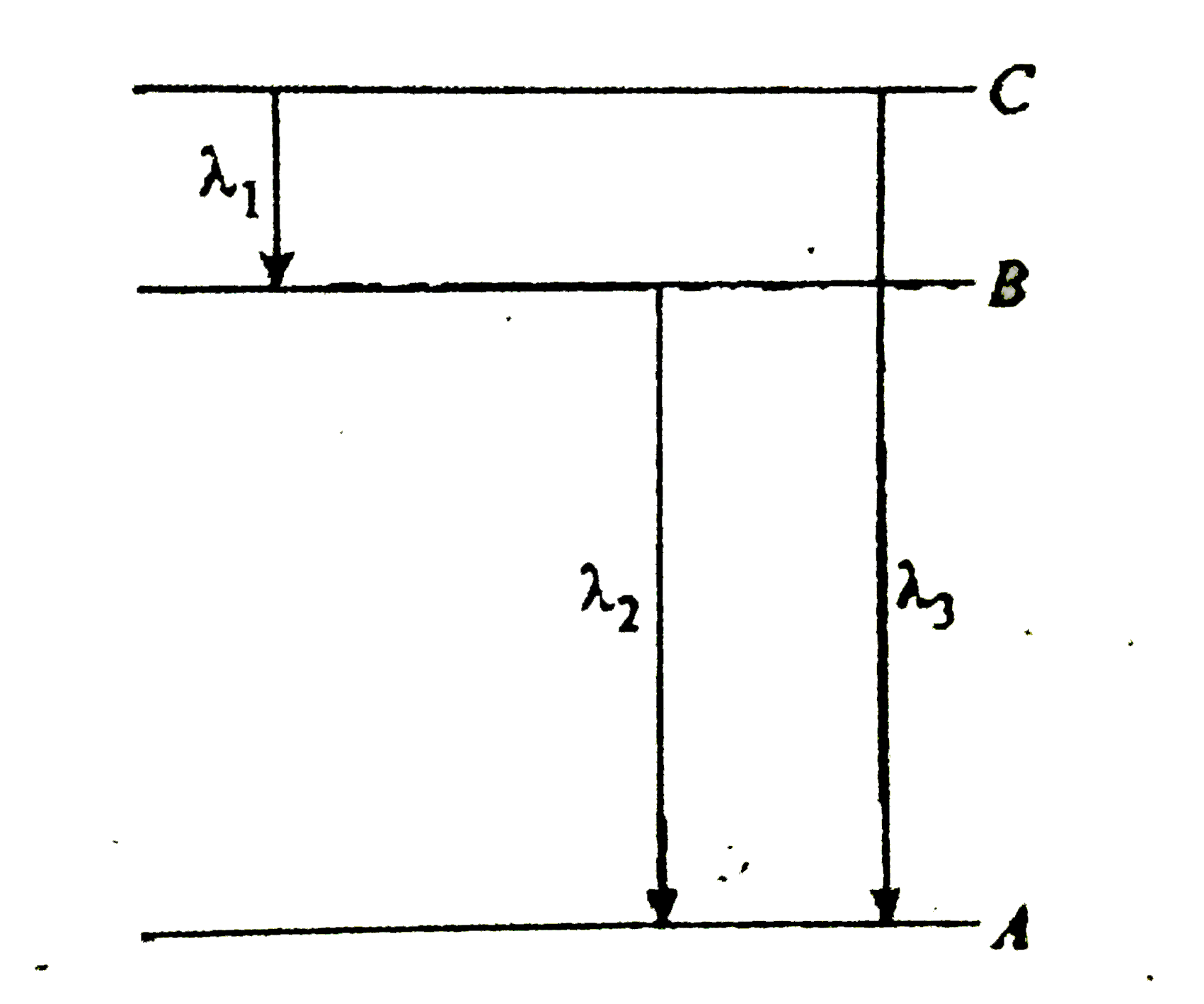Complete Solutions to COMPETITION FILE ( Objective B (MCQs)) of chapter ATOMS of Class 12 book with complete answers and questions
| Class 12 | PHYSICS |
| Chapter | ATOMS |
| MODERN PUBLICATION | COMPETITION FILE ( Objective B (MCQs)) |
| Number Of Questions | 20 |
| Academic Year | 2023-24 |
The ratio of kinetic energy to the total energy of an electron in a Bohr orbit of the hydrogen atom, is
View SolutionWhat is the radius of `2^(nd)` Bohr orbit, given the radius of the first Bohr orbit is r?
View SolutionIf the ionization energy for the hydrogen atom is 13.6 eV , the energy required to excite it from the ground state to the next higher state is nearly
View SolutionIn a Rutherford scattering experiment when a projectile of change `Z_(1)` and mass `M_(1)` approaches s target nucleus of change `Z_(2)` and mass `M_(2)`, te distance of closed approach is `r_(0)`. The energy of the projectile is
View SolutionThe total energy of an electron in an atom in an orbit is `-3.4eV`. Its kinetic and potential energies are, respectively:
View SolutionWe wish to see inside an atom. Assuming the atom to have a diameter of `100` pm, this means that one must be able to resolve a width of say `10` pm. If an electron microscope is used, the minimum electron energy required is about
View Solution`alpha`-particle consists of
View SolutionEnergy levels A,B and C of a certain atom correspond to increasing values of energy i.e. `E_(A) lt E_(B) lt E_(C)` .If `lamda_(1),lamda_(2),lamda_(3)` are the wavelengths of radiation corresponding to transition C to B,B to A and C to A respectively, which of the following statements is correct ?

View SolutionIonization potential of hydrogen atom is 13.6 eV. Hydrogen atoms in the ground state are excited by monochromatic radiation of photon energy 12.1 eV. According to Bohr's theory, the spectral lines emitted by hydrogen will be
View SolutionEvery series of hydrogen spectrum has an upper and lower limit in wavelength. The spectral series which has an upper limit of wavelegnth equal to `18752 Å` is
(Rydberg constant `R = 1.097 xx 10^(7)` per metre)
View SolutionThe ionization enegry of the electron in the hydrogen atom in its ground state is `13.6 ev`. The atoms are excited to higher energy levels to emit radiations of `6` wavelengths. Maximum wavelength of emitted radiation corresponds to the transition between
View SolutionThe wavelength of the first line of Lyman series for hydrogen atom is equal to that of the second line of Balmer series for a hydrogen-like ion. The atomic number `Z` of hydrogen-like ion is
View SolutionElectron in hydrogen atom first jumps from third excited state to second excited state and then form second excited state to first excited state. The ratio of wavelength `lambda_(1): lambda_(2)` emitted in two cases is
View SolutionAn electrons of a stationary hydrogen atom passes form the fifth energy level to the ground level. The velocity that the atom acquired as a result of photon emission will be
`(m` is the mass of the electron, `R`, Rydberg constant and `h`, Planck's constant)
View SolutionRatio of longest wavelengths corresponding to Lyman and Balmer series in hydrogen spectrum is
View SolutionHydrogen atom in ground state is excited by a monochromatic radiation of `lambda = 975 Å`. Number of spectral lines in the resulting spectrum emitted will be
View SolutionConsider `3rd` orbit of `He^(+)` (Helium) using nonrelativistic approach the speed of electron in this orbit will be (given `K = 9 xx 10^(9)` constant `Z = 2` and `h` (Planck's constant) `= 6.6 xx 10^(-34)Js`.)
View SolutionGiven the value of Rydberg constant is `10^(7)m^(-1)`, the waves number of the lest line of the Balmer series in hydrogen spectrum will be:
View SolutionWhen an `alpha-`particle of mass 'm' moving with velocity 'v' bombards on a heavy nucleus of charge 'Ze' its distance of closest approach from the nucleus depends on `m` as :
View SolutionThe ratio of wavelength of the lest line of Balmer series and the last line Lyman series is:
View Solution
COMPETITION FILE ( Objective B (MCQs)) questions and complete solutions for chapter ATOMS of MODERN PUBLISHERS PHYSICS (HINGLISH) of Class 12
All Exercises from MODERN PUBLICATION Class 12 PHYSICS ATOMS
- Chapter Practice Test
- COMPETITION FILE ( Matching )
- COMPETITION FILE ( Objective B (MCQs))
- COMPETITION FILE (Assertion & Reason )
- COMPETITION FILE (Integers )
- COMPETITION FILE (Matrix match )
- COMPETITION FILE (Ncert Exemplar Problems )
- COMPETITION FILE (Objective A(MCQs) )
- COMPETITION FILE (Objective BB (MCQs))
- COMPETITION FILE (Objective C (MCQs))
- COMPETITION FILE (Objective D (MCQs))
- Conceptual Questions
- Hots
- Ncert File
- Practice Problems
- Revision Exercise (Fill in the blanks )
- Revision Exercise (Long Answer )
- Revision Exercise (Numerical Problems )
- Revision Exercise (Short Answer )
- Revision Exercise (Very Short )
- Solved Examples
- Tough & Tricky Problems
- very short